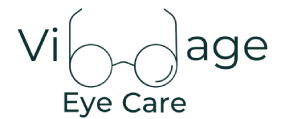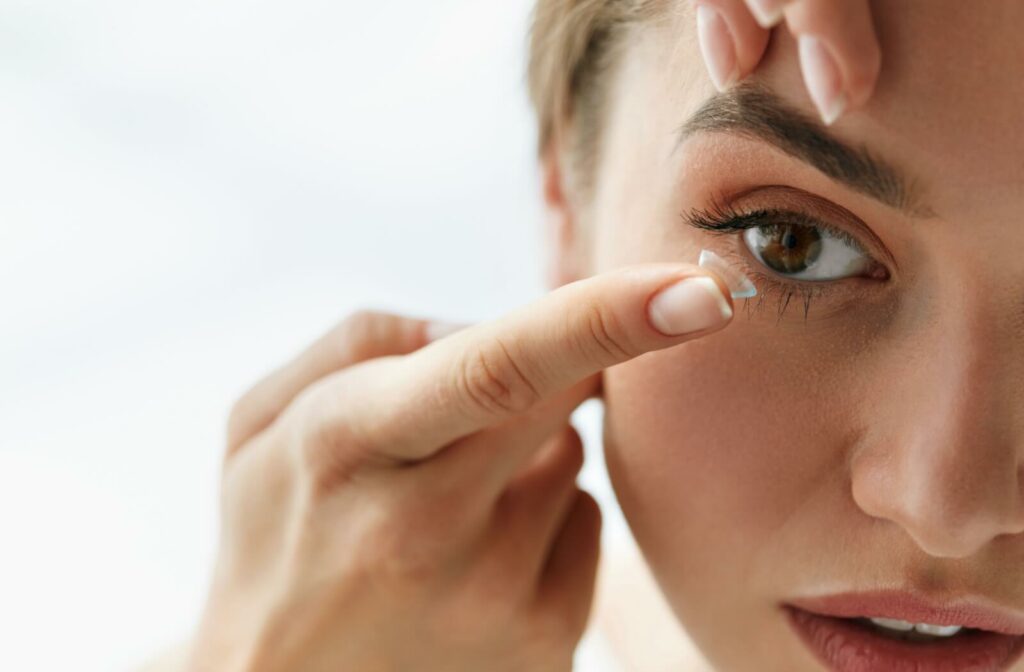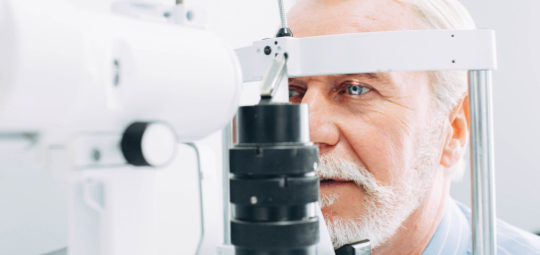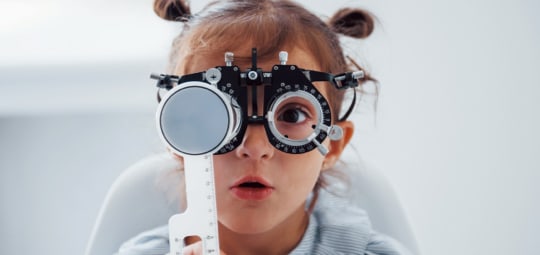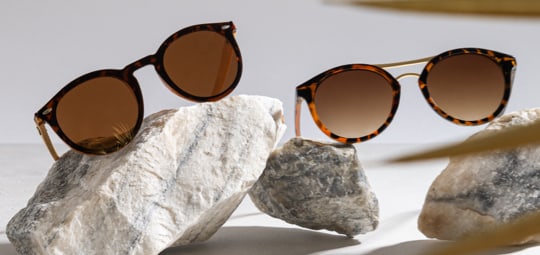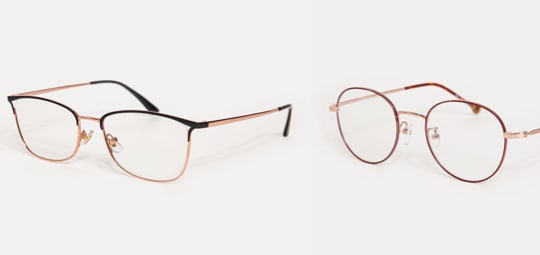For those stepping into the world of eyewear, whether due to a recent discovery of vision needs or a switch from frames to contact lenses, navigating the nuances of eye prescriptions can feel like learning a new language. It’s a common question among new eyewear users and contact lens wearers alike: “Are contact lens prescriptions the same as glasses?”
They are different due to a number of factors, the main one being proximity to the eye. Glasses and contact lens prescriptions both correct your vision, but use distinct measurements for each.
At a comprehensive eye exam, your optometrist will assess your eyes to give you an accurate and up-to-date prescription.
Understanding the Difference
At first glance, it might seem intuitive that prescriptions for glasses and contact lenses would be identical—they’re both correcting the same vision issues, after all. However, the truth is more nuanced. While both types of prescriptions aim to correct visual impairments such as nearsightedness, farsightedness, astigmatism, and presbyopia, fundamental differences in how glasses and contacts work necessitate distinct prescriptions.
Prescription Parameters
One of the primary reasons for this distinction lies in the proximity of the corrective lens to the eye. Glasses sit a short distance away from the eye, which impacts how light bends as it enters. In contrast, contact lenses rest directly on the surface of the eye, offering a more intimate correction of vision. This difference means that the strength of a prescription for glasses often does not directly translate to the strength needed for contact lenses.
Contact lens prescriptions include additional parameters that are not present in glasses prescriptions, such as:
- Base Curve: Indicates the curvature of the back surface of the lens to ensure a proper fit on your eye’s cornea.
- Diameter: Represents the overall size of the contact lens, affecting how it sits on your eye.
Contact lens prescriptions often specify:
- Lens Material: Since contact lenses come in various materials, the prescription may indicate a specific type best suited for the wearer’s eye health or comfort preferences.
- Brand: Certain eye conditions may respond better to the design or material of a specific brand. Thus, a doctor might recommend a particular brand in the prescription.
- Replacement Schedule: This specifies how often the lenses should be replaced — daily, weekly, bi-weekly, monthly, etc., to maintain eye health and comfort.
- Power: While similar to glasses prescriptions, the power in contact lens prescriptions may be adjusted to account for the lens’s placement directly on the eye.
Additional Factors
Beyond the correction of visual acuity, wearing contacts involves consideration of the eye’s health and oxygen permeability. The material of the lens, the duration it can be safely worn, and the lens’s moisture content are crucial factors ensuring comfort and preventing issues like dry eyes or infections.
Choosing the right type of contact lens is a critical decision that hinges on several factors, including lifestyle, comfort, and specific vision correction needs. For instance, those leading an active lifestyle may benefit from soft contact lenses due to their flexibility and comfort, whereas others with particular corneal conditions could find rigid gas-permeable (RGP) lenses more suitable, offering sharper vision by retaining their shape.
Importance of Accuracy
Accuracy in your prescription is paramount. An incorrect prescription can lead to discomfort, eye strain, or even worsening vision. This underscores the necessity of regular consultations with an eye care professional who can provide precise measurements and evaluate your eye health.
Making the Switch
Transitioning from glasses to contact lenses or updating your contact lens prescription can be a smooth process with the right preparation and understanding. To ensure the best possible experience and adaptation to new lenses, consider the following steps:
- Regular Eye Examinations: Consistent check-ups are essential not just for updating prescriptions but also for assessing the health of your eyes, which can change over time due to factors like aging, health conditions, or environmental influences.
- Consultation and Trial: Discuss any lifestyle changes, comfort issues with current lenses, or specific needs can help tailor the choice of contacts. Many practitioners provide trial lenses to allow for real-world testing before making a final decision.
- Adherence to Prescribed Use: Following the specific usage guidelines, such as wearing schedules and care instructions, is vital for maintaining eye health and ensuring the effectiveness of the lenses.
- Monitoring and Feedback: Paying attention to how your eyes respond to new contact lenses and communicating any negative reactions or discomfort to your eye care professional can fine-tune the fit or material choice, ensuring both comfort and clarity.
Adopting these practices when exploring the world of contact lenses will enhance not only your vision but also the overall health and satisfaction with your eyewear choice.
Benefits of Properly Fitted Lenses
Investing the time to get properly fitted for contact lenses can significantly enhance your quality of life. Not only can it elevate your visual clarity, but it can also offer a sense of freedom and flexibility not always achievable with glasses—key for those leading an active, dynamic lifestyle.
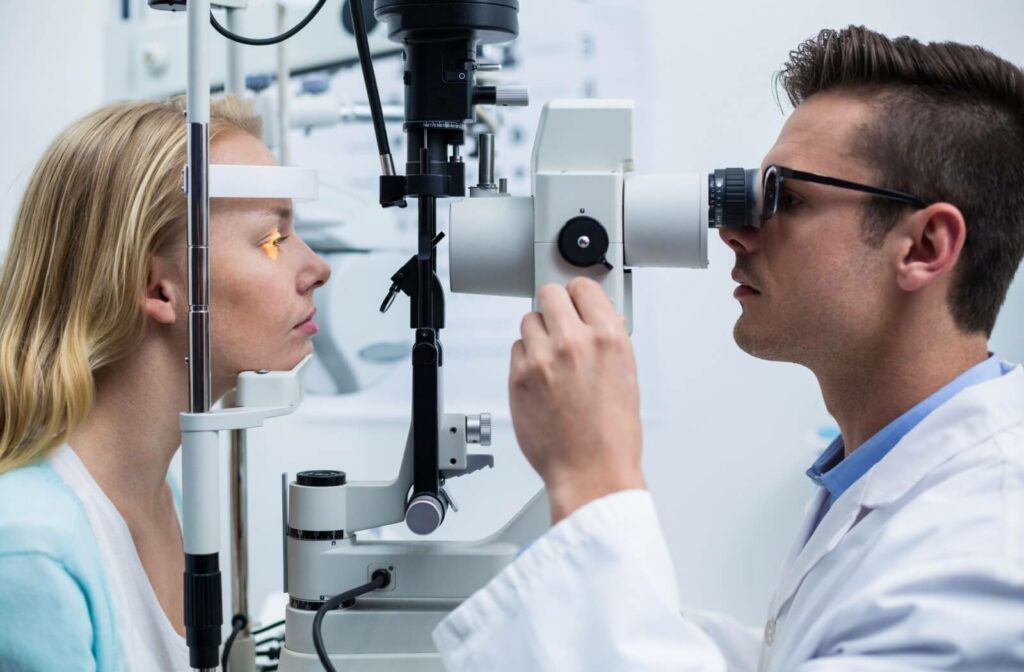
Takeaways to Consider
If you’re looking to explore the world of contact lenses or need an updated prescription, consider visiting us at The Village Eye Care in Arizona. Our team of dedicated eye care professionals is here to guide you through every step of the process, ensuring that your vision care is in expert hands.
Accurate vision correction is not just about seeing the world more clearly—it’s also about enhancing your daily life and safeguarding your future eye health.
